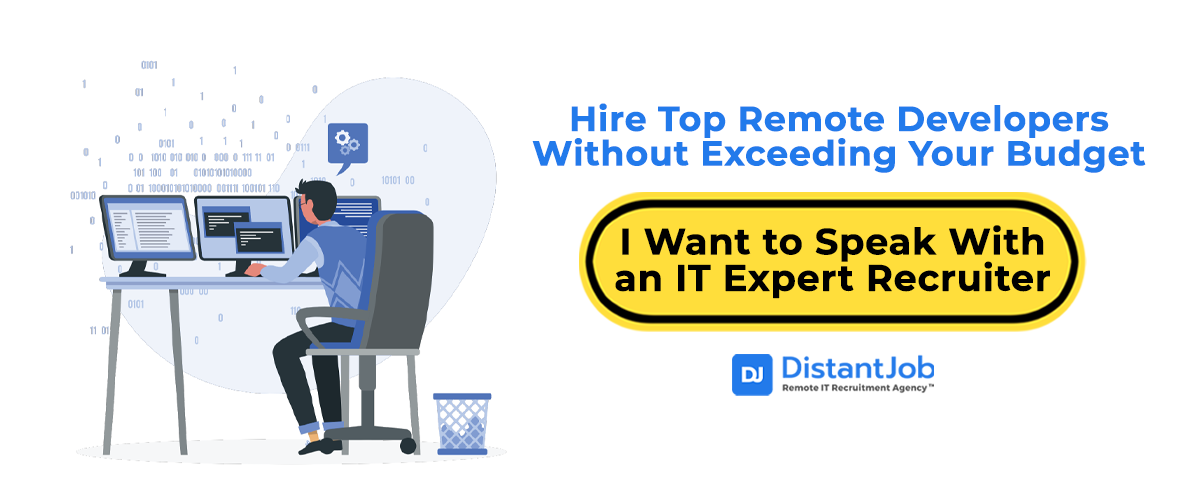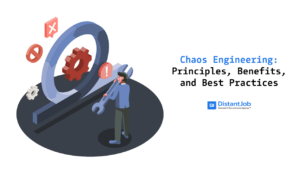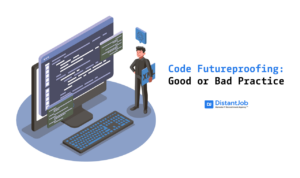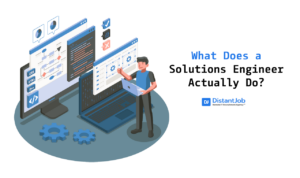In the dynamic realm of software development and product design, the term MVP, or Minimum Viable Product, frequently emerges as a cornerstone concept. An MVP in software development is a technique used to build an application or website with enough features for the product to be usable by early adopters. This approach paves the way for robust user feedback while minimizing initial development costs.
If you are an investor or a tech founder, it is always best to look at the MVP of the product being pitched to you before giving it the go-ahead or investing your money in it. A common mistake for startups is the tendency to build products grounded on assumptions. According to a report by CB Insights revealed that among the top reasons for startup failures, 42% stemmed from a lack of market need for their products. This statistic underscores the vital role of an MVP in mitigating such risks – it provides a tangible version of the product for real users, whose feedback can be instrumental in refining the product.
In this article, we will discuss everything you need to know about MVP in software development, its costs, and finding qualified professionals to do it. The journey from concept to market-tested MVP is a thrilling one, and understanding the MVP landscape is a pivotal stride toward that objective. Let’s get started.
Understanding MVP in Software Development
MVP stands for Minimum Viable Product. It is a product with enough features to satisfy early adopters, and to provide feedback for future product development. It is a version of a product that can be released to the market to test its viability and to determine if further investment in its development is warranted.
How To Build An MVP – Stages For Building A Software-Based MVP
MVP Software Development has certain procedures you need to go through to make it a success.
1. Define The Problem
To avoid building an application that no one will use, you need to clearly define the problem your app intends to solve. During this stage, you should sit down and discuss with your software development team the problem that an app can solve and how significant it is to the people that could potentially use the app.
2. Decide Who Your Target Audience Is
After defining the problem, you need to define your target audience. Some developers make the mistake of trying to build an app for everyone. Yes, it is possible to create something that billions of people will use, but it is best to target a niche group when starting out.
Build your target audience persona and make it as specific as possible. The buyer persona should include details like age, profession, location, income bracket, education level, hobbies, etc. With these details, it will be easier to determine the features you will ship first.
3. Determine The Essential Features
After defining the problem and target audience, it is time to determine the key features that the product’s first version will ship with.
You should list all the potential features the product should have and then select the features that are just enough to ensure it is usable. From these features, you have to choose a few crucial ones that the MVP should ship with, including one major feature to test the general idea of the product and the problem it intends to solve.
4. Build the MVP
Now that you have decided about the features, it is time to build the product. Determine the programming languages, frameworks, and other tools you need, and then you can start development.
At this stage, you don’t need to think about perfection; focus on building a usable product. Your goal should be to create a functional product in the shortest time possible to test if your idea is viable and functional.
Key Attributes Of Any Software-Based MVP
- It offers enough value that early adopters are willing to use or even buy. Yes, the MVP should have basic features to save time and money spent while building it. However, you need to create a usable MVP to give your early adopters enough reason to use it.
- Should demonstrate enough future benefits to retain most early adopters. Even though your MVP only ships with basic features, it needs to give your early adopters hope of improving over time.
- It should provide a feedback loop for guiding future development. The first features you ship the product with should make it easy for the early adopters to give feedback about their overall product experience.
5. Test The Product With Early Adopters
Once you have built a usable product, the next step is to test it with actual users. Find the people who match the buyer persona you created and request that they use your product. If possible, reach out to these people via social media, email, or physically. The goal is to have a good number of people who can use the product and give you feedback.
You need to provide a mechanism that allows the users to give you honest feedback about their experience with your product. If it means sending them follow-up emails with a form to fill, do it. Your aim is to get feedback that you can use to determine if your idea is what the users want or if it needs improvement.
6. Use Feedback To Improve The Product
When users give feedback about the product, you need to gather it and see how best to implement it into the MVP. First, focus on feedback on how the product solves the user’s problem to help you know whether to pivot or continue with the same idea. If the feedback is positive, you can now determine the next features to add to your product based on the feedback.
You may not be able to fix all the issues raised by the early adopters at once. Determine the most pressing issues that affect the user’s experience of the product and attend to those first. This process may also involve removing some useless features from the product.
Spend as little time as possible while fixing these issues. You should then roll out one feature at a time and work on the rest as the users continue to use the product. It should be a constant loop until you reach the point when the product is ready to be used by the general public.
MVP Requirements
While building the MVP for your next application, there are certain things you need to have in place to streamline the process. Common requirements that almost all software MVPs need to include the following:
- Development tools: Before starting the building process, you need to be ready with all the essential tools for development. Some tools might require buying, so you have to plan for those costs ahead of time.
- Deployment platform: For your users to use an application, it needs to be deployed on a particular platform. AWS and Microsoft Azure are some of the best deployment platforms you can consider.
- Manpower: In the planning process, you need to assess the day-to-day tasks that have to be done to bring the MPVP to life. Each of these tasks needs to be assigned to someone with the essential skills to execute it.
Skills Needed to Build Software-based MVP Development
Whether you are a solopreneur or have a team, these are the most common skills needed to build a successful software-based MVP:
- UI Design/Front-end development: One of the essential elements of any application is its graphical user interface. While building an MVP, you need to have UI design skills or bring someone to help with UI design. The UI is what the user interacts with, so it should be usable at the bare minimum.
- Back-end development: Every application has to execute commands that the user inputs from the front-end behind the scenes. So, you will need server-side scripting skills to build the backend of your application.
- Project management: Besides the technical skills of writing code, someone on the team needs to know how to run a project. The project manager on the team is the one that ensures teams on the backend and front are in sync, and within the timeline, for delivering the next features you plan to implement. For most startups, that founder is usually the project manager and the vision bearer.
Final thoughts
Building an MVP for your following software product is crucial for its short- and long-term success. An MVP will not only save you money but will also save you time that you would otherwise waste on features and functionalities that users may not need the product to have.
Make sure you go through all the stages of building an MVP that we have shared. Keep in mind that the exact tasks to be executed at each stage may vary based on the product you are building.
If you’re looking to hire skilled developers to build your MVP, you can get in touch with our team. We will help you find and hire qualified remote coders based on your project requirements, tech stack, and, most importantly, culture.
Frequently Asked Questions on MVP Development
A prototype is simply a mockup meant to describe the visual aspects of the final products. It is usually not a functional product.
On the other hand, an MVP is a functional product that can accomplish basic tasks that the developer wants early adopters to test out.
For example, a web application or website prototype is built using graphic design tools like Adobe XD. On the other hand, an MVP of this same application is built using software development tools that may include IDEs, web app frameworks, programming languages, etc.
If we estimate actual figures, the cost for building most software-based MVPs might come between $15,000 to $50,000. Minimizing this cost is important to test your idea in the market without spending a lot of resources.
The main factors that determine MVP development costs include:
– Type and complexity of the application
– Number and level of expertise of the development team
– The cost of the tools needed to build the product
– The scope of design and development tasks
MVP design is the process by which the development team figures out and filters the essential features that should be included to test out the viability of the final product.
MVP stands for Minimum Viable Product, an initial version of a product that works and is capable of being tested, but at the same time has the potential to change and improve based on user feedback.
Amazon: Amazon started as a simple online book store. After receiving several book orders, more products were added to the store until we got the Amazon we see today.
Airbnb: Started as a simple platform where people could list their rooms or houses for short-term rental to earn extra income. It turned out that lots of travelers were willing to reside in rentals to save some money on accommodation, especially when they travel to foreign countries.
Facebook: The first version of Facebook was just a simple platform connecting college kids at Harvard University (hence the name). When Zuckerberg realized that college kids loved the app, he further scaled it up to make it usable by people outside the college.
Dropbox: Dropbox first dropped an explainer video showing the benefits of storing all your files and data in one place that you can access over the internet on all your devices to get feedback from the users about the idea before building the actual product. Dropbox then built the first version of their MVP that shipped with one primary feature: accessing your files over the internet across all your devices.
Zappos: To test his idea, Zappos founder Nick Swinmurn took photos of shoes he found at online stores to find if people would purchase these shoes online without trying them out. He found out that people loved the idea. So, he built the web application to ensure that his idea was worth the investment of his time and money.





